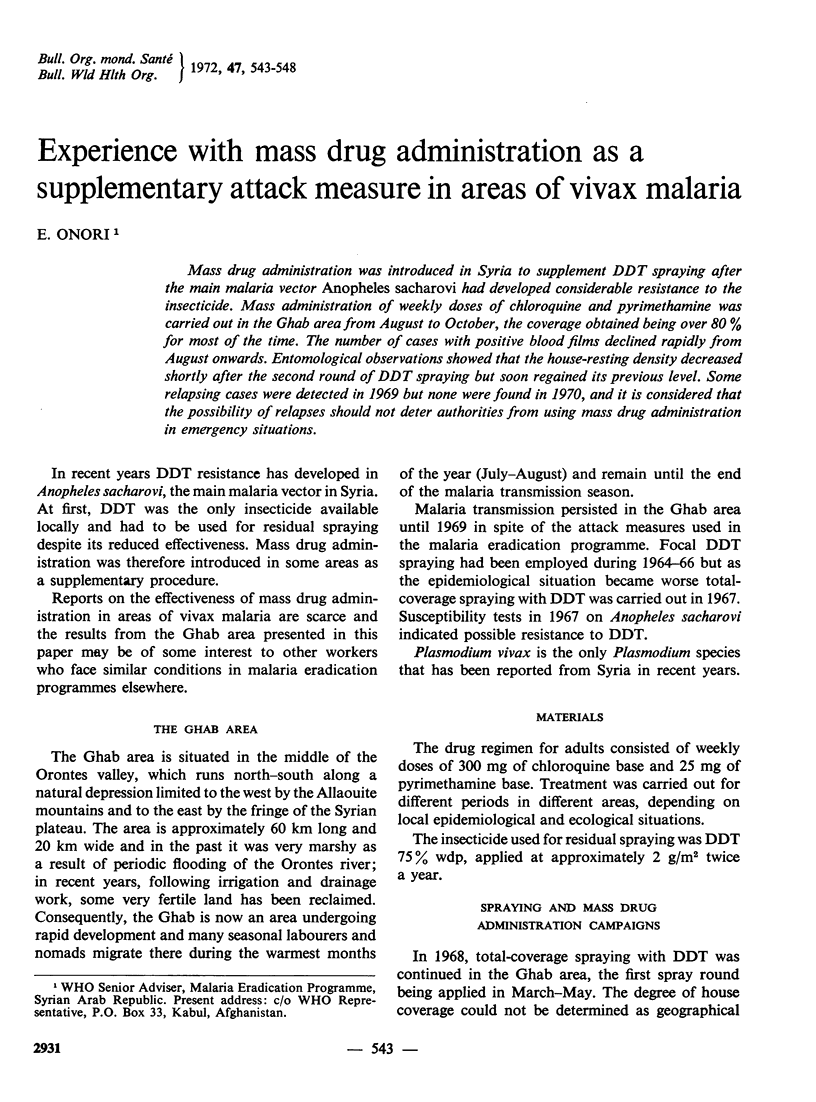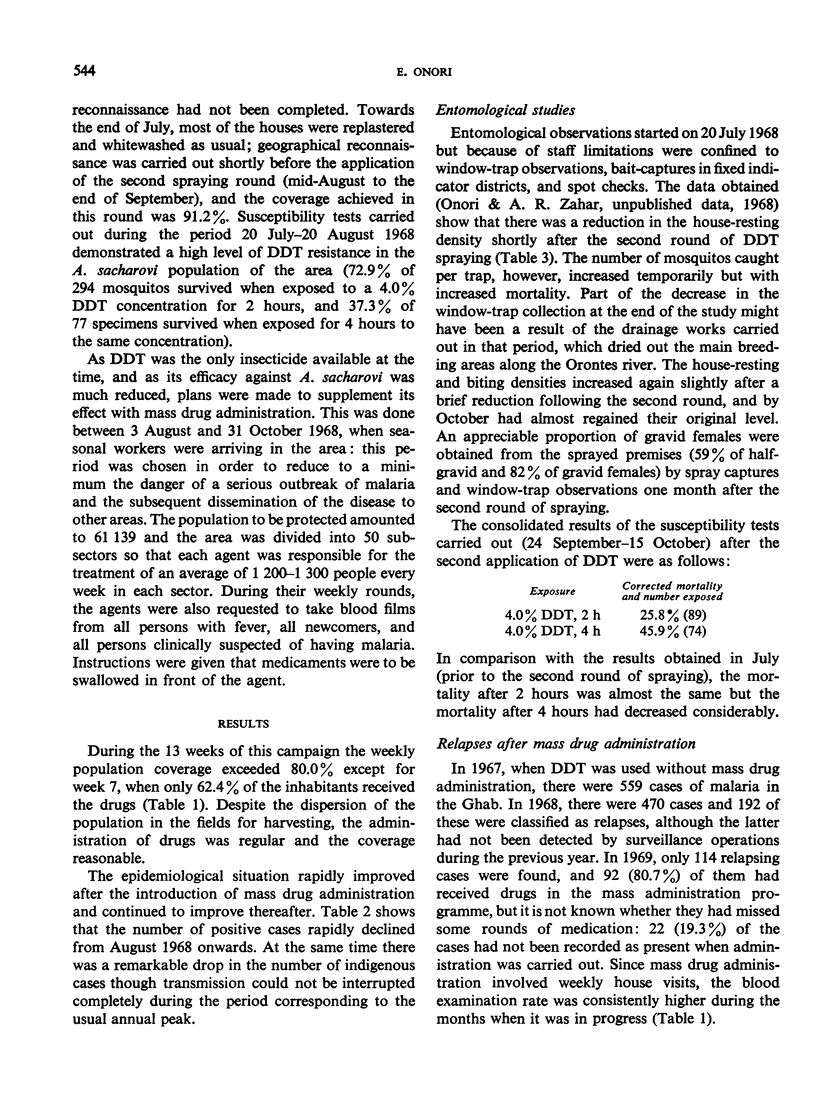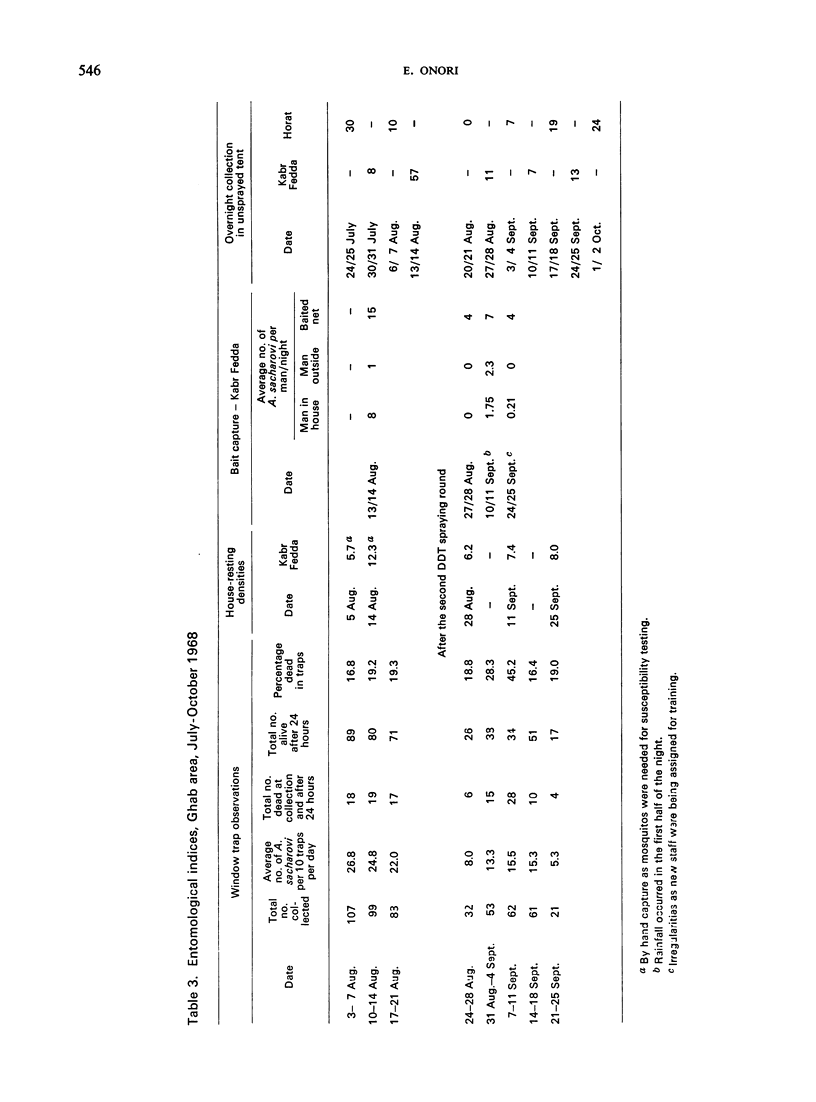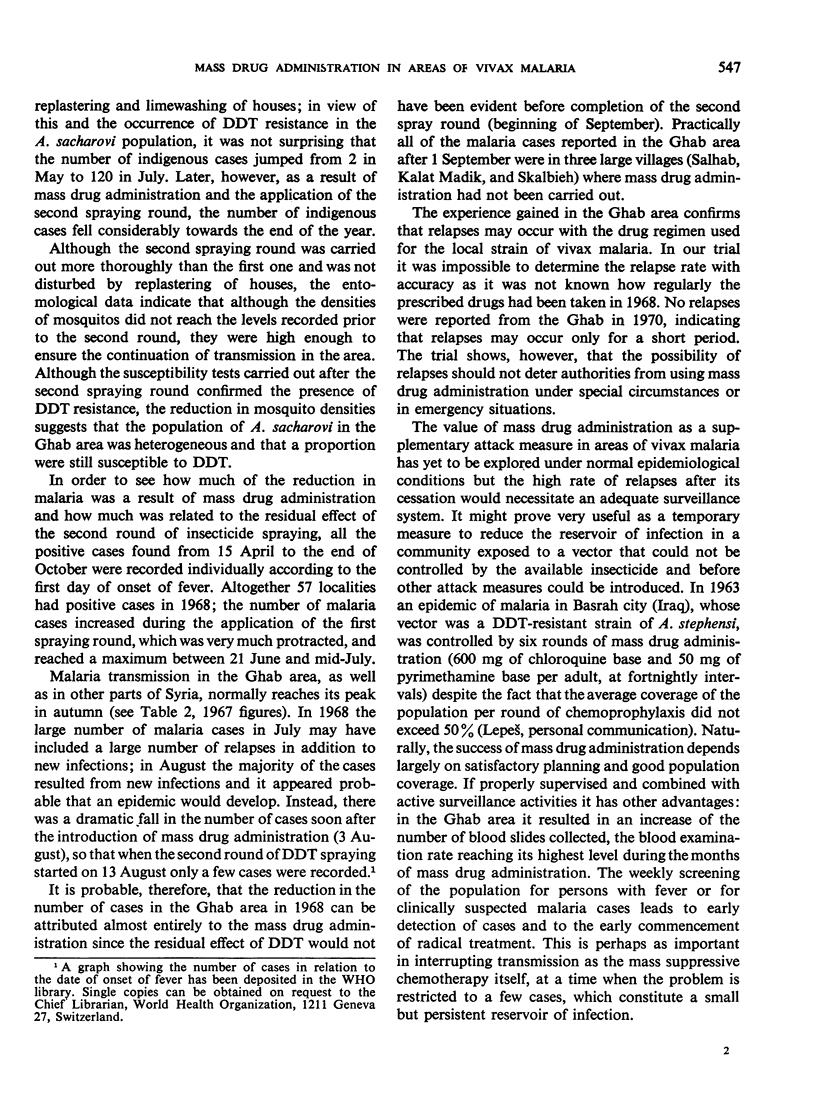Abstract
Mass drug administration was introduced in Syria to supplement DDT spraying after the main malaria vector Anopheles sacharovi had developed considerable resistance to the insecticide. Mass administration of weekly doses of chloroquine and pyrimethamine was carried out in the Ghab area from August to October, the coverage obtained being over 80% for most of the time. The number of cases with positive blood films declined rapidly from August onwards. Entomological observations showed that the house-resting density decreased shortly after the second round of DDT spraying but soon regained its previous level. Some relapsing cases were detected in 1969 but none were found in 1970, and it is considered that the possibility of relapses should not deter authorities from using mass drug administration in emergency situations.
Full text
PDF





Selected References
These references are in PubMed. This may not be the complete list of references from this article.
- CLYDE D. F. Chloroquine treatment for malaria in semi-immune patients. Am J Trop Med Hyg. 1961 Jan;10:1–4. doi: 10.4269/ajtmh.1961.10.1. [DOI] [PubMed] [Google Scholar]
- Macdonald G., Cuellar C. B., Foll C. V. The dynamics of malaria. Bull World Health Organ. 1968;38(5):743–755. [PMC free article] [PubMed] [Google Scholar]
- ZULUETA J., KAFUKO G. W., MCCRAE A. W. R., CULLEN J. R., PEDRSEN C. K., WASSWA D. F. B. A MALARIA ERADICATION EXPERIMENT IN THE HIGHLANDS OF KIGEZI (UGANDA). East Afr Med J. 1964 Mar;41:102–120. [PubMed] [Google Scholar]


